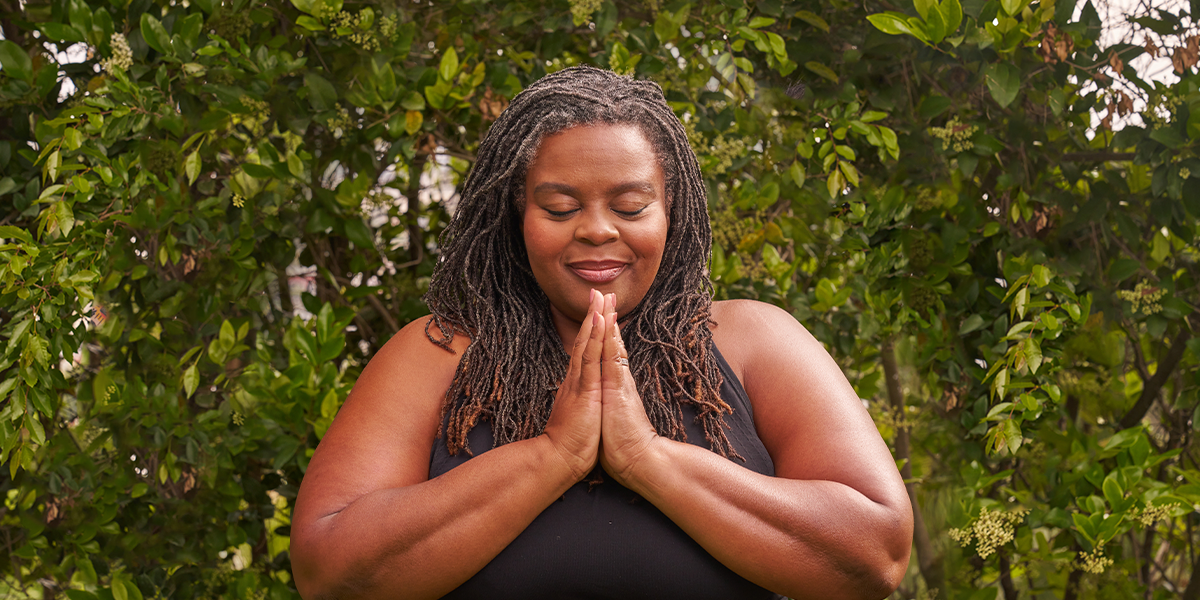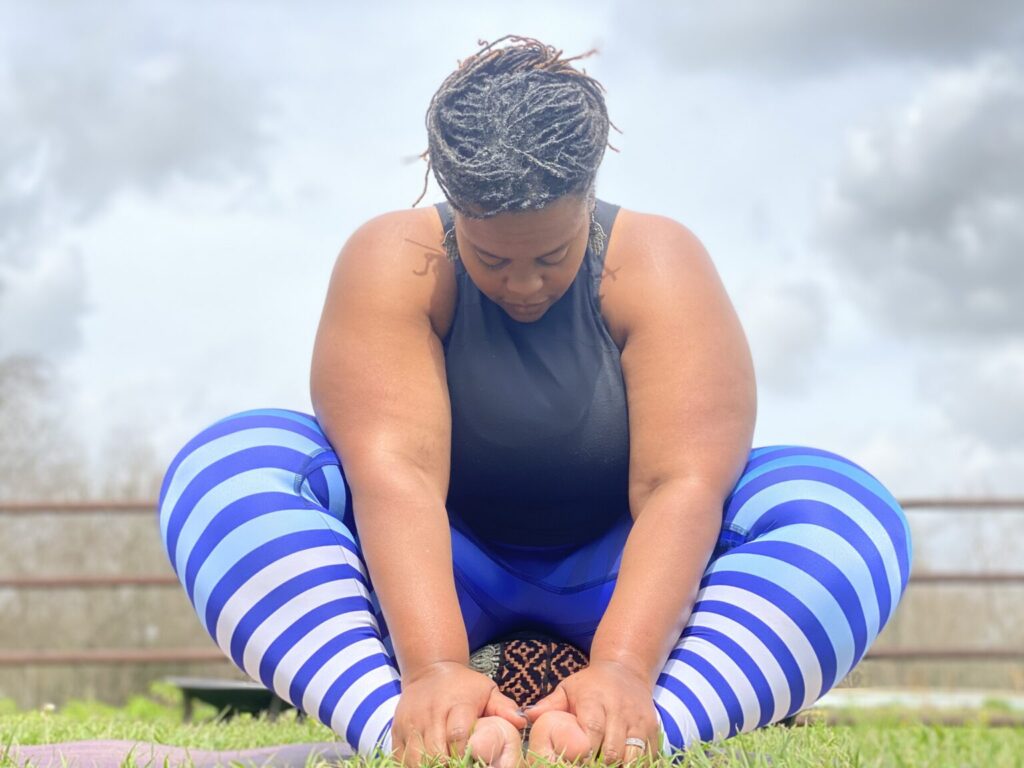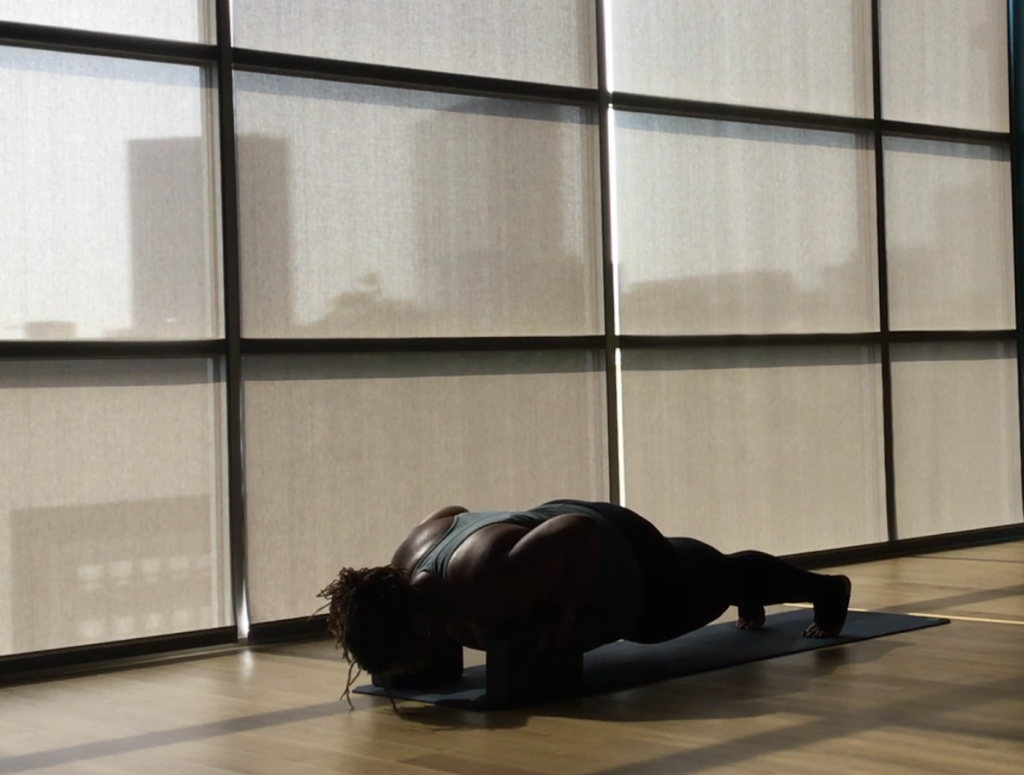Integrating Yoga Principles Beyond the Mat

The practices of yoga have never ever been about a mat. Ever. If anything, it was a rug.
I should warn you now: I’m a historian. So we’re going to take just a second to go down a rabbit hole.
As you probably know, yoga has been around for at least 3000 years, and more likely 5000+ since the Indus-Sarasvati Civilization. Around the 6th century BCE, ancient Indian texts called the Upanishads and the Puranas mentioned a system of practices called Hatha Yoga, which was based on the thought that the body needed to be prepared and purified before attempting meditation. There are swings towards more orthodox, spiritual ways of practicing and of more physical ways of experiencing a state of yoga depending on various factors, including caste (position in society) and access to the practices.
Yogic practices become informed by Buddhism and Jainism, and a person or collective called Patanjali discern an 8-fold path to a state of yoga in the 6th century CE (1000 years after the Upanishads), which is non-misery or transcendence.
Patanjali codifies the 8-fold path as:
Yamas – codes of conduct or observances that place you in right relationship with others
- Ahimsa – nonharming
- Satya – truth-speaking
- Asteya – nonstealing
- Brahmacharya – moderation of life force or energy
- Aparigraha – nongrasping/nonattachment
Niyamas – observances that place you in right relationship with yourself
- Saucha – cleanliness / purification
- Santosha – contentment
- Tapas – discipline
- Svadhyaya – self-study
- Ishvara pranidhana – surrender to a higher being, state of consciousness, or power
Asana – postures
Pranayama – management of life force or energy
Pratyahara – turning inward
Dharana – focused concentration
Dhiyana – meditation
Samadhi – bliss / transcendence / self realization
It is important to note that asana specifically meant sitting postures; remember that the goal is meditation as preparation for transcendence. It’s not until the 1850s under British colonial rule that postures beyond sitting come into an expanded use as an effort to receive British acceptance for this indigenous practice that was demonized by them. “Modern yoga” shows up 60 years later, and postures that you’ll experience in a common class largely didn’t come into use until the 20th century.

Ustrasana / camel

Bhadrasana / baddha konasana / Bound Angle
Yoga Bhasha (a commentary on the Yoga Sutras) discusses ustrasana Camel, alongside
padmasana Lotus, virasana Hero, bhadrasana Bound Angle, kraunchasana Heron, dandasana
Staff, and a handful of others as asanas in the 5th or 6th century CE.

Chaturanga Dandasana, alongside 200+ other asanas, are codified into the Hatha Yoga
system in the 1966 publication of Iyengar’s Light On Yoga.
Getting back to the 8 limbs of yoga…
…in order to reach the next limb, one had to master the previous.
This is where things get interesting.
One had to master being in right relationship with others and with self before moving into a single posture?
Yes. And way back then, they thought that was hard, too. So the Hatha Yoga system, which is the father system to all movement-based yoga, became more focused on the limbs of yoga starting with asanas or postures with the thought that one would eventually figure out how to do relationship and spirituality well.
By the mid 20th century, the West had become obsessed with yoga as physical exercise, but did it work? Is it possible to move from a practice of shapes into a practice of positive ways of being with others and with yourself?
Maybe.
Are you taking time to sit with yourself?
Are you in a practice of self-study?
Do you practice with steadiness and ease or is your practice competitive and performative?
Do you take moments of observation in your postural practice?
If so, then you might notice what you say to yourself when things go awry or when you’re tired or unable to do what you could do the day before or the year prior. You might notice attachments forming to accomplishments rather than a growing ease in the practice that leads to a meditative state. You might notice your shadow self creeping in to speak old stories into your psyche that are assuaged through the movement practice.
If shifting from old ways of being and thinking creates new ways of being and thinking, it’s possible for one to use the yoga of movement to get to the yoga of relationship. After all, the relationship we have with ourselves is often the most tumultuous and the most important. If we can cultivate deep love and acceptance for ourselves, we are likely to be able to do that with others. And we’re more likely to receive that deep love and admiration without ego attachments, too.
Of course, the answer to the above questions might be “no.”
And you’d join a very large community of practitioners who have added the shapes of yoga as a part of their exercise regimen.
And that’s okay.
If your answer is “yes,” however, you might find yourself in a practice that shows up for you when you need it most. You might understand why the Bhagavad Gita describes yoga as “skill in action.” You might tap into your tools of kindness, contentment, turning inward, observation, and calm during times of deep stress, anxiety, and grief. And, finally, and most amazingly, your practice will evolve and change as you do.
Recommended reading for deeper study into yoga beyond the mat:
Inside the Yoga Sutras by Jaganeth Carrera
Hatha Yoga Pradipika by Swami Muktibodhananda
Autobiography of a Yogi by Yogananda